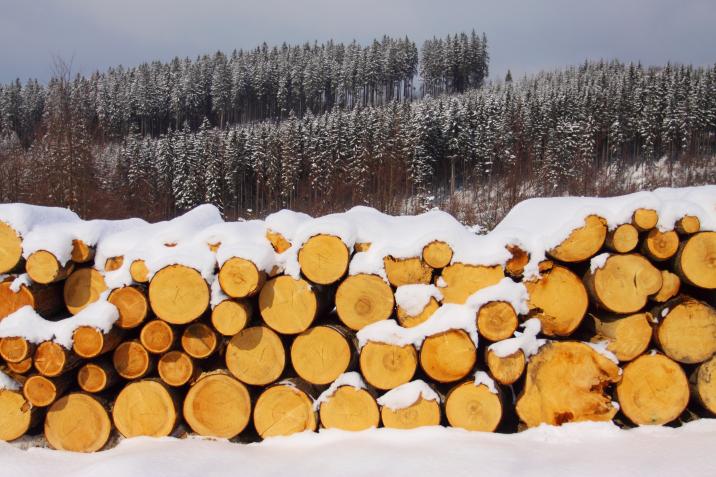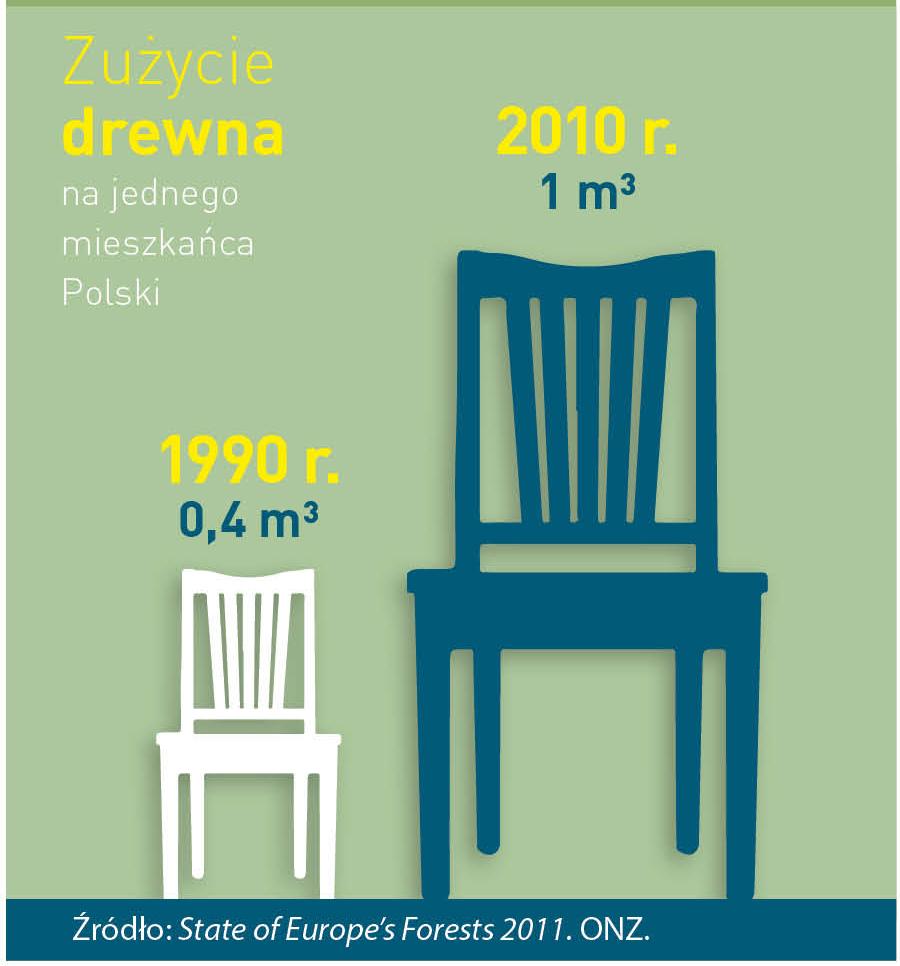 Asset Publisher
Asset Publisher
Surowiec do wszystkiego
W erze szkła, aluminium i krzemu można by odnieść wrażenie, że drewno jest passé. Nic bardziej mylnego! Gdziekolwiek się znajdziemy, na pewno wokół nas będzie wiele przedmiotów, które nie powstałyby bez użycia drewna.
Szacuje się, że współcześnie ma ono ok. 30 tys. zastosowań: drewno i materiały drewnopochodne są wykorzystywane m.in. w budownictwie, górnictwie, energetyce, do produkcji maszyn rolniczych i przemysłowych, podłóg, mebli, płyt, papieru i opakowań, narzędzi, instrumentów muzycznych, sprzętu sportowego, zabawek czy materiałów biurowych.
Szacuje się, że współcześnie drewno ma ok. 30 tys. zastosowań
Pochodzenie, sposób pozyskania i właściwości fizyczne drewna sprawiają, że jest najbardziej naturalnym i przyjaznym materiałem, który wykorzystujemy na tak wielką skalę. Jest niezbędnym elementem modnego dziś życia w stylu „eko", w harmonii z naturą i w zdrowiu. W obliczu zmian klimatycznych ważne jest też to, że nie tylko żywe drzewa wiążą znaczne ilości dwutlenku węgla. Wielkim magazynem CO2 są również produkty z drewna.
Im bardziej rozwinięta i nowoczesna gospodarka, tym więcej drewna potrzebuje. W ciągu ostatnich dwóch dekad zużycie drewna w naszym kraju wzrosło aż dwuipółkrotnie. W 1990 r. Polak przeciętnie zużywał rocznie równowartość 0,4 m sześc. drewna okrągłego, a obecnie – ponad 1 m sześc. Można się spodziewać, że ten wskaźnik jeszcze bardziej wzrośnie – do wartości podobnych jak w innych krajach europejskich (Niemiec zużywa rocznie średnio 1,7 m sześc. drewna, Czech – prawie 1,5 m sześc., Włoch– 1,1 m sześc.).
Dowiedz się więcej o drewnie z książki „Naturalnie, drewno!" (PDF)
 Asset Publisher
Asset Publisher
 Asset Publisher
Asset Publisher
Forests of our Forest District
Forests of our Forest District
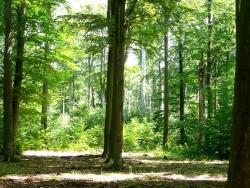 Lasy Nadleśnictwa. Fot. Jerzy Wilanowski
Lasy Nadleśnictwa. Fot. Jerzy Wilanowski
 Piękne lasy Nadleśnictwa. Fot. Jerzy Wilanowski
Piękne lasy Nadleśnictwa. Fot. Jerzy Wilanowski
 Bór iglasty. Fot. Jerzy Wilanowski
Bór iglasty. Fot. Jerzy Wilanowski
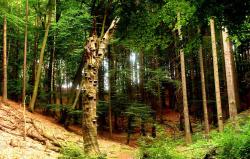 Rezerwat przyrody "Annabrzeskie Wąwozy". Fot. Jerzy Wilanowski
Rezerwat przyrody "Annabrzeskie Wąwozy". Fot. Jerzy Wilanowski
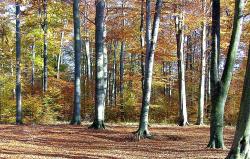 Krajobraz leśny. Fot. Jerzy Wilanowski
Krajobraz leśny. Fot. Jerzy Wilanowski
Szprotawa Forest District Inspectorate includes two Sub-districts – Szprotawa and Małomice – and manages a total area of over 19 000 ha. Its share of forested areas is only 28.2% making it the lowest ratio in the entire Regional Directorate of the State Forests in Zielona Góra. Forests managed by the Inspectorate include forests maintained for industrial purposes, protected forests and reserves.
Landscape of the Forest District is very heterogeneous.The area of Szprotawa Sub-district and the southern part of Małomice Sub-district is quite monochromatic, whereas the northern part of Małomice Sub-district is known for its undulating landscape (end moraine) at places turning into hills.
Geological structure
The Forest District is located within the area of Middle Polish Glaciation, in Mazovia-Podlasie Stadial.It is dominated by geological deposits originating from the Tertiary and the Quaternary, such as:fluvioglacial sands and gravels, river sands and gravels and boulder clay and sand.
Types of forest habitats
Forest habitats of the Forest District consist mainly of mixed and coniferous forests, with a small share of riparian forests and alder forests.Pine is the most common tree and the entire forest ecosystem consists in 60% of this species.The second most common species is Oak followed by Alder.
Plants and animals
Forests of Szprotawa Forest District are home to a variety of plant and animal species, including those under strict and partial protection.There are over 20 protected plant and lichen species in the District, including:Common Cottongrass, Common Toothwort, Marsh Gentian, Purple Foxglove, Yellow Iris, Stiff Clubmoss or Usnea Filipendula.
Mammal species includeWild Boar, Roe Deer, Deer, Fox, Raccoon Dog, Badger, Marten and Hare.Forests of Szprotawa Forest District are also inhabited by rare invertebrate species, including 9 species included on the Polish Red List of Animals.The species are:Medicinal Leech, Great Capricorn Beetle and Lucanus Cervus.
Apart from the protected invertebrate species there is a large number of amphibian and reptile species.The most interesting species includeViviparous Lizard, Smooth Snake and European Tree Frog.
Birds inhabiting the district also include many rare and endangered species:Black Stork, Whooper Swan, Wood Sandpiper, Eurasian Pygmy Owl, Boreal Owl and the pride of the District – White-tailed Eagle.


